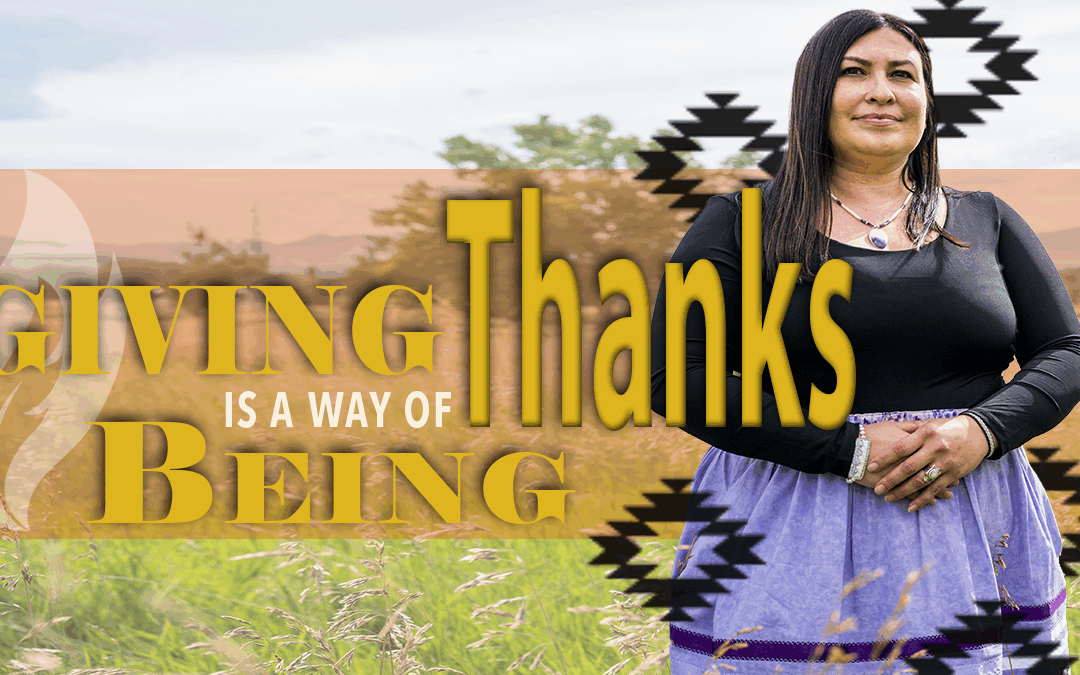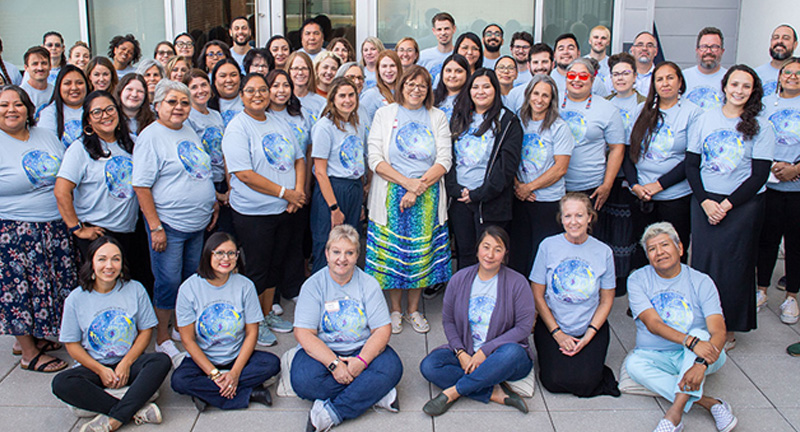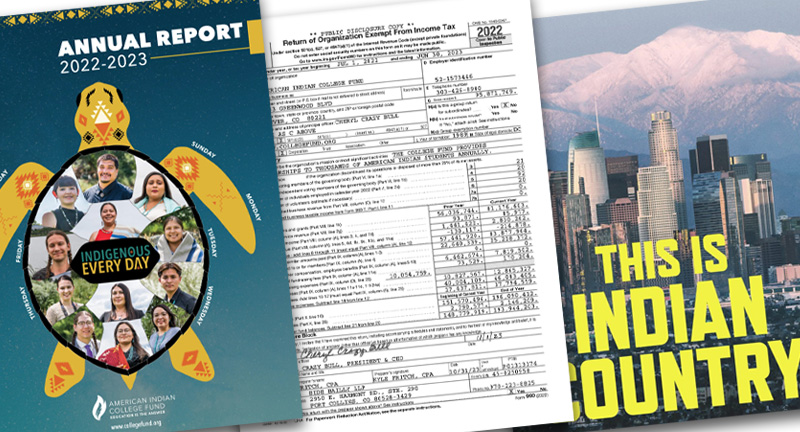NIEA’s letter further stated that NIEA and its members advocate for local control of education and emphasized the need for community-based decision making in education under the philosophy that communities and parents are best equipped to determine the needs of their children while remaining strongly committed to utilizing Tribal sovereignty to educate and protect Indigenous children in a manner that is clear and responsive to their communities’ needs. NIEA welcomed the opportunity to work alongside the Trump Administration in developing the “Ending Indoctrination Strategy,” particularly in areas such as curriculum standards, teacher certification, and professional development, believing Tribal histories and cultures must be taught in public schools with the input and endorsement of Native Nations, parents, and state legislatures.
NIEA summarized that utilizing Tribal sovereignty and honoring the federal trust responsibility to Indian Education includes:
-
- naming tribal representatives to task forces to represent the close to 650,000 American Indian, Alaska Native, and Native Hawaiian students in public schools across the United States when crafting recommendations.
- continuing the momentum Native Nations have gained in a non-partisan fashion with members of their state legislatures to pass tribal history laws and to work with their state departments of education to implement these policies. (Today, 13 states require K-12 schools to include Native Nations’ histories to teach the importance of Indian Country is part of the cultural identity of our Nation and the history of Tribal Nations that is woven into the fabric of American history, ensuring all children have the opportunity to learn about all of the people that make this country great.
- recognizing the sovereign authority Native Nations have over their local educational programming.
Although NIEA primarily addressed K-12 education in the letter, the DoE’s recognition of the sovereign authority of Native Nations over educating their citizens is relevant to all education institutions. And all of Indian Country has had concerns about the implications of the Administration’s Dear Colleague Letter to higher education institutions, which similarly referred to DEI in education and diverse education curriculum as “Marxist ideology,” with the worry that the treatment of Indigenous students in higher education would be considered similarly to students from other racial and ethnic groups.
On April 25, 2025, the DoE responded to the NIEA clarifying its stance on tribal histories and Native-serving funding and programs and affirmed its commitment to “returning education to States and Tribes,” while making it clear that “American Indian, Alaska Native, and Native Hawaiian history is not classified as diversity, equity, and inclusion (DEI) or critical race theory (CRT), and the Department will not treat Native history as DEI or CRT.”
The DoE further acknowledged the unique political and legal relationship between Native Nations and the United States. The letter confirmed that statutory grant programs serving Native students will continue. The letter concludes by stating that the Department looks forward to “visiting and consulting with Indian Tribes, Alaska Native Villages, and Native Hawaiian Organizations,” indicating it plans to continue with a consultative capacity with Native Nations as is required of sovereign nations in a trust relationship.
NIEA Executive Director Jason Dropik said in an April 25 letter to its organization’s constituents, “We are grateful to Secretary McMahon and Acting Assistant Secretary Hayley Sanon for their letter affirming what Native communities have long known—that Native history is not DEI or CRT, and that the Department’s programs and funding sources are essential components of the federal government’s trust and treaty obligations to Native education. As the federal government considers restructuring its role in education, we recognize the significant concerns within our communities and among the schools that serve our children. Affirmative statements like this help ease those concerns and reaffirm the Department’s commitment to Native Nations, tribal educators, and Native-serving Local Education Agencies. We look forward to welcoming the Department to Indian Country and to collaborating closely on future tribal consultations.”
Cheryl Crazy Bull, President and CEO of the American Indian College Fund said, “Although the NIEA letter and the DoE’s response was specific to K-12 education, it affirmed what we know is true of the federal government’s consideration of Native people—who are citizens of sovereign Native nations who have a legal relationship with the United States government and are not considered to be not members of ethnicities or races. We remain committed to the respect and consideration of the right of all Americans from different backgrounds to access a higher education for a stronger, more dynamic nation, while we steadfastly defending our political identities, cultures, and languages as Indigenous peoples.”
Indian Nations Sovereignty 101
How many federally recognized Indian Tribes/Alaska Native Nations are there?
As of 2023, the federal government recognizes 574 Indian Tribes and Alaska Native entities in the United States, according to the Bureau of Indian Affairs. Federal recognition acknowledges the government-to-government status a Tribe has with the United States and provides for federal services resulting from treaties signed with those Nations.
In addition to holding citizenship in their Native Nations, American Indians are also citizens of the United States. Native Americans achieved citizenship status in 1924.
Are Indigenous Nations similar? Native Tribes are culturally distinct. The best comparison would be contiguous European or African nations with different cultures, languages, and traditions.
What is the definition of Indian nation sovereignty? Federally recognized Tribes (also called Indian or Native nations) are self-governing—or sovereign nations—by Congress. Because Indian tribes are recognized by the federal government as political entities with sovereign political status in the U.S. Constitution; they are not seen as persons of a particular race. The relevant section of the Constitution is Article I, which deals with the legislative powers granted to Congress. Article I Section 8 of the Constitution affords Congress the power “… to regulate commerce with foreign nations…and with the Indian tribes.”
Can any Tribe be federally recognized? Many Native Nations were recognized by treaty-making in the 18th and 19th centuries. Today, there is a rigorous application process to attain federal recognition. The federal agency of the Bureau of Indian Affairs in the U.S. Department of the Interior maintains a directory of federally recognized Tribes.
How does tribal sovereignty work? Three Supreme Court rulings in the 1800s affirmed the doctrine of tribal sovereignty. It recognizes the right of Native nations to self-govern and run their internal affairs as so-called “domestic, dependent nations.” It also prevents states from interfering with these rights while allowing Congress to override Native nations’ authority.
Sovereignty is a fundamental principle of the U.S. Constitution with increasing legal significance for Native nations. The United States recognizes the Tribes’ rights to form their own governments, determine membership criteria for their nations, administer justice, levy taxes, establish businesses, and regulate the use of Indian land (reservations), resources, and the conduct of tribal members on their territory.
Do states have jurisdiction over American Indians on reservation lands located within their borders? States do not have civil or criminal jurisdiction in Indian country unless Congress delegates it, or the federal courts determine it exists. A recent example would be the 1988 Indian Gaming Regulatory Act, adopted by Congress, which requires tribes and states to enter compacts or agreements before gambling operations can open on Indian land.
Are Indians American citizens? Yes. American Indians have dual citizenship as tribal members and as American citizens. Congress extended citizenship to American Indians in 1924.
Can American Indians vote? American Indians and Alaska Natives have the same right to vote as other American citizens. They vote in local, state, federal, and tribal elections. Each Native Nation has the right to determine its criteria for eligible voters in tribal elections.
Do Native Americans pay state or federal taxes? Native people pay the same taxes as other American citizens, with these exceptions:
- Native Americans employed on reservations do not pay state income taxes.
- American Indian and Alaska Native people living on trust land are free from local and state property taxes.
- Generally, states do not levy sales taxes on transactions made on reservations. Indians do not pay federal income taxes on money earned from trust lands, such as fees received for grazing rights and oil drilling.
What are treaties? From 1777 to 1871, U.S. relations and Indian Nations negotiated legally binding agreements called treaties. These treaties, or agreements, between tribal governments and the United States, transferred and created property rights and service obligations. The United States signed 371 treaties with American Indian Tribes, usually to gain land rights.
What agreements did the treaties contain? The treaties often promised Indians protection, goods, services, self-governing rights, and a tribal homeland in exchange for their cooperation and retained interest in acres of their homelands.
Why did European settlers sign treaties with the Tribes? Tribes were powerful because of their military strength and knowledge of the land. Colonists also knew that under European law, land transactions required legal documentation.
Why did Tribes agree to enter treaties with the federal government? Indian Nations entered into agreements rather than losing more tribal members to war and disease.
Were the treaties broken? The federal government has broken all treaties signed with Native nations. Conflicting federal policy and court rulings resulted in Native people losing some of their civil rights and lands. An early example of a broken treaty resulted in the Trail of Tears, the forced march of 14,000 Cherokees from Georgia, Alabama, and Tennessee, to Oklahoma, despite a 1791 treaty granting the Cherokee a permanent homeland. About 4,000 Cherokee people —mostly babies, children, and elders — died from starvation, exposure, and disease.
What is a trust responsibility? The federal Indian trust responsibility is one of the more important principles in federal Indian law. The United States has a legally enforceable, fiduciary obligation to protect tribal lands, assets, resources, and treaty rights of Indian Nations.
Are treaties still valid? The federal government stopped entering treaties with Indian Tribes in 1871, however, signed treaties stay in effect unless superseded by acts of Congress or other treaties.
Do treaties grant Native Americans special rights today? In the Pacific Northwest, treaties grant Tribes the right to hunt, fish, and gather food as their ancestors did. On all reservations, treaties stipulate the federal government must grant Tribes access to K-12 education and medical care.









